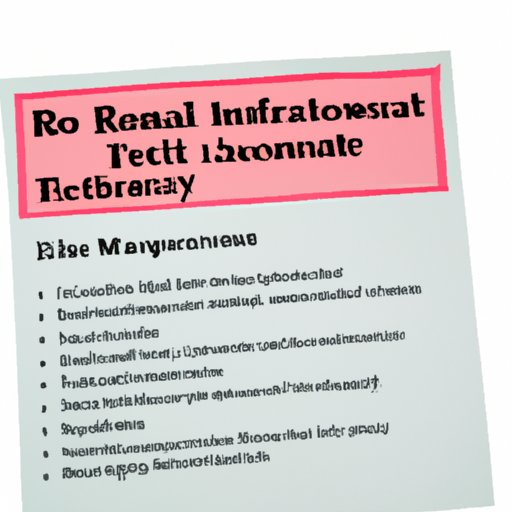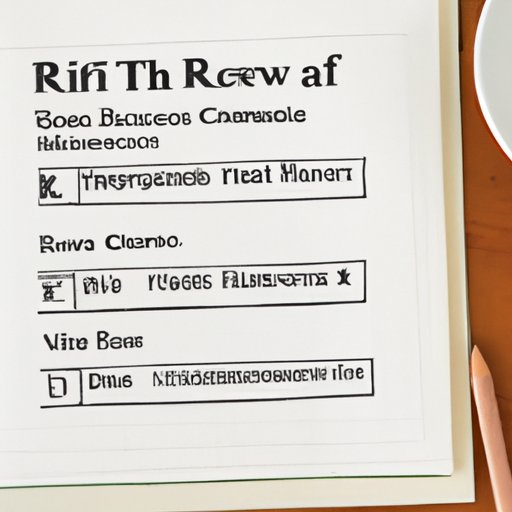How to Open a Roth IRA for a Successful Retirement
When it comes to planning for retirement, opening a Roth IRA is an important step. A Roth IRA is a type of individual retirement account that offers tax-free withdrawals in retirement. Plus, it provides flexibility to withdraw contributions at any time. Not to mention, a Roth IRA offers a range of investment options, including stocks, bonds, and mutual funds. This article will cover everything you need to know to open a Roth IRA and start saving for your retirement.

Benefits of Opening a Roth IRA
There are several benefits to opening a Roth IRA:
Tax-free withdrawals in retirement
One of the primary benefits of a Roth IRA is that contributions are made after-tax. This means that when you withdraw money from your Roth IRA in retirement, you won’t have to pay taxes on your contributions or the growth of your investments, giving you more money in retirement.
Flexibility to withdraw contributions at any time
Another benefit of a Roth IRA is the ability to withdraw your contributions without penalty. While it’s important to keep your retirement savings intact, life happens. Knowing that you can access your contributions in case of an emergency provides peace of mind.
Comparison of Roth IRA to other retirement savings options
When it comes to retirement saving options, there are several different accounts to consider. While traditional IRAs and 401(k)s also offer tax advantages, Roth IRAs have some unique benefits. For example, unlike traditional retirement savings accounts that require mandatory minimum distributions in retirement, Roth IRAs have no mandatory distribution requirements, giving you greater flexibility in retirement.
Step-by-Step Guide to Opening a Roth IRA
Opening a Roth IRA is a straightforward process. Here’s a step-by-step guide to help:
Research and select a reputable Roth IRA provider
It’s important to select a reputable Roth IRA provider. Look for providers with low fees and good investment options. Some of the most popular Roth IRA providers include Vanguard, Fidelity, and Charles Schwab.
Gather necessary documentation
Before opening a Roth IRA, you will need to provide personal information such as your name, address, and social security number. You will also need to have your bank account and routing number for contributions.
Complete the application process
The application process varies slightly from provider to provider but is generally simple and straightforward. You will need to provide personal information and select your investment options. You may also need to decide if you want to make automatic contributions or fund your account manually.
Confirm the account has been opened
Once you’ve completed the application process, make sure to confirm that your account has been opened. You should receive confirmation from your provider, and you can also log in to your account online to confirm.
Different Types of Roth IRA Accounts
There are several different types of Roth IRA accounts to consider:
Traditional Roth IRA
A traditional Roth IRA is the most common type of Roth IRA. Contributions are made with after-tax dollars, and withdrawals in retirement are tax-free. The contribution limit for a Roth IRA in 2021 is $6,000 for those under 50 and $7,000 for those over 50.
Roth 401(k)
Many employers now offer Roth 401(k) plans. These plans are similar to traditional 401(k)s, but contributions are made with after-tax dollars. Like a traditional 401(k), there are contribution limits in place. In 2021, the contribution limit for a Roth 401(k) is $19,500 or $26,000 for those over 50.
Roth Conversions
A Roth conversion is the process of converting funds from a traditional IRA or 401(k) to a Roth IRA. Taxes are paid on the amount converted, but future growth and withdrawals from the account are tax-free. Keep in mind that there are income limits in place for Roth conversions.
Comparison of different types of Roth IRA accounts
Each type of Roth IRA account offers different benefits and drawbacks. It’s important to consider your individual situation and goals when deciding which type of Roth IRA to open.
Common Mistakes to Avoid When Opening a Roth IRA
When opening a Roth IRA, there are some common mistakes to avoid:
Not starting early enough
The earlier you start saving, the more time your investments have to grow. It’s never too early to start thinking about retirement.
Overlooking fees
Make sure to consider the fees associated with your Roth IRA provider. High fees can eat into your returns and impact your retirement savings over time.
Not understanding the contribution limits
It’s important to understand contribution limits and make sure you’re contributing the maximum amount allowed each year.
Forgetting to designate beneficiaries
Make sure to designate beneficiaries for your Roth IRA. This ensures that your account will pass to your heirs as you intended.
Tips on how to avoid common mistakes
Start saving early, consider fees, and make sure to understand contribution limits and designate beneficiaries. Keep these tips in mind to make the most of your Roth IRA.
How to Fund Your Roth IRA
There are several ways to fund your Roth IRA:
Setting up automatic contributions
Many Roth IRA providers allow you to set up automatic contributions. This ensures that you’re consistently contributing to your retirement savings.
Making catch-up contributions
If you’re over 50, you can make catch-up contributions to your Roth IRA. This allows you to contribute an additional $1,000 per year.
Using your tax refund
If you receive a tax refund, consider using it to fund your Roth IRA. This allows you to maximize your contributions without impacting your budget.
Comparison of different funding options
Each funding option has its benefits. Consider your individual situation when deciding how to fund your Roth IRA.
Maximizing the Benefits of a Roth IRA
There are several ways to maximize the benefits of your Roth IRA:
Tax-loss harvesting
Tax-loss harvesting involves selling investments that have decreased in value to offset capital gains taxes. This can help lower your tax bill and maximize your Roth IRA returns.
Estate planning strategies
A Roth IRA can be a helpful estate planning tool. Consider the tax implications for your heirs and plan accordingly.
Other tips on maximizing Roth IRA benefits
Look for tax-efficient investments, utilize diversification, and consider your overall financial plan when maximizing the benefits of your Roth IRA.
Conclusion
Opening a Roth IRA is a smart step towards planning for a successful retirement. A Roth IRA provides tax-free withdrawals in retirement, flexibility, and a range of investment options. To open a Roth IRA, select a reputable provider, gather necessary documentation, and complete the application process. Avoid common mistakes, consider different types of Roth IRA accounts, and maximize the benefits of your Roth IRA with smart strategies. Remember, the earlier you start saving, the more time your investments have to grow.
